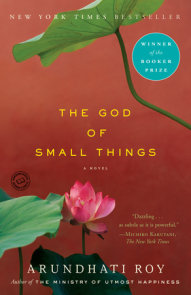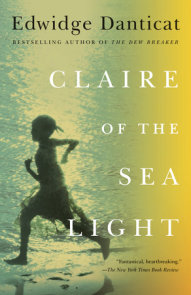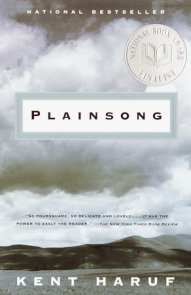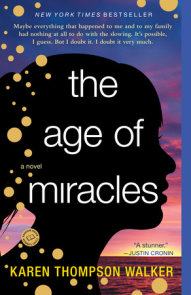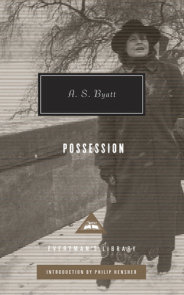TEACHING GUIDE
NOTE TO TEACHERS
Please click on the PDF link below to download the Teacher’s Guide.
SUGGESTED ACTIVITIES BEFORE READING THE NOVEL
1. Watch a video of Philippe Petit’s walk between the Twin Towers. (For example, go to: www.tiny.cc/ efc14x). Then, ask students to find a picture of the crowds who gathered at the World Trade Center the morning of 9-11. Have students answer the following questions: if, instead of the terrorist attack, the people in your photograph were watching the tightrope walk, how would their response to what was happening above them be different? What might be the same about both sets of responses?
Correlates to CCSS Writing: Text Types and Purposes W.11-12.2; Reading: Informational Texts: Key Ideas and Details RI.11-12.3.
2. Find pictures of New York City and enlarge them to 8″ x 10″. Cut each into four equally sized pieces, and hand students one fragmented cutting each. Have students write about their individual piece: What does it show? What do they think they know about the complete photograph by looking at this fragment of it? What else do they need to know before they can be sure? Have students try to find the other matching pieces. Use this exercise as a metaphor for the novel’s structure—each chapter is like a fragment of the picture: meaningful alone, but much more so when reunited with the other pieces.
Correlates to CCSS Writing: Text Types and Purposes W.11-12.2.
3. Read the poem “Locksley Hall” and have students rewrite, in prose, one scene in the poem in the voice of the poem’s narrator. Then, have them write that same scene in the voice of the speaker’s lost love. Finally, have students write the scene a third time from the perspective of an objective third-person narrator. As a class, discuss how each perspective differed from the other.
Correlates to CCSS Reading: Literature: Key Ideas and Details RL.11-12.1; Writing: Text Types and Purposes W.11-12.3.
4. Watch an interview with McCann in which he discusses the novel and its connection to 9-11. Have students make three predictions about the novel based on those interviews. (For example, go to: www.tiny.cc/pfc14x).
Correlates to CCSS Reading: Informational Text: Key Ideas and Details RI.11-12.2.
CLASSROOM DISCUSSION – PROLOGUE
1. On page 4, the narrator says of the crowd watching the tightrope walker, “even when they cursed, it was done quietly, reverently.” How is this statement ironic? How is that same irony present in other details we are given of the crowd as it gathered this August morning?
2. The narrator seems as confused as the crowd he is describing. Why do you think McCann used such a perspective to open his novel?
3. Connection and balance are important motifs woven throughout the novel. How does the prologue establish both motifs?
Correlates to CCSS Reading: Literature: Craft and Structure RL.11-12.4, 11-12.5, 11-12.6.
CLASSROOM DISCUSSION – BOOK ONE
1. As adults, John Corrigan (referred to in the novel by only his last name) and his brother Ciaran embody different aspects of their mother’s personality. How has the mother influenced each of her sons? Give examples. Why, though, is Ciaran unable to understand his brother, and how does this misunderstanding affect their relationship as adults?
2. On page 29, Corrigan tells his brother that fear is throbbing in the air. “It’s like dust. You walk about and don’t see it, don’t notice it, but it’s there and it’s all coming down, covering everything.” Which characters so far in the novel demonstrate fear in this way? How?
3. On page 39, Ciaran writes that his brother is a fool. “All his religiosity, all his pious horseshit, it came down to nothing, the world was vicious and that’s what it amounts to, and hope is nothing more or less than what you can see with your own bare eyes.” What happened to Ciaran that has made him so cynical? Do you think that Ciaran will remain this hopeless? Why or why not?
4. On page 57, Ciaran says “there are moments we return to, now and always. Family is like water—it has a memory of what it once filled, always trying to get back to the original stream.” How can a family be like water trying to return to its original stream? What does this metaphor suggest about Ciaran’s relationship with his brother?
5. The central irony in Adelita’s relationship with Corrigan is that it makes him both a better person and a sinner. What other “sinners” in the book illustrate that same duality? What does this suggest about the nature of sin?
6. On page 67, Ciaran writes that his brother was a “crack of light under that door, and yet the door was shut to him. Only bits and pieces of him would leak out and he would end up barricaded behind that which he had penetrated. Maybe it was entirely his own fault. Maybe he welcomed the complications: he had created them purely because he needed them to survive.” Argue for or against Ciaran’s analysis that Corrigan needed his life to be difficult, using details from the chapter to support your answer.
7. What do you think was the “something beautiful” Corrigan saw as he spoke to Adelita at the chapter’s close? Why did the author leave it ambiguous?
8. Chapter 2, “Miró, Miró on the Wall,” shifts to a third-person perspective, away from the first-person narrative of Ciaran. How does this choice of perspective change the way we perceive Claire?
9. Claire imagines a conversation in which she reveals her support group membership to her husband Solomon; he calls her “honey” but demonstrates impatience at her story. What details do we learn about Solomon that justify the aloofness she imagines? What details do we learn about Solomon that demonstrate that he loves his wife? How has grief seemingly affected their marriage?
10. On the bottom of page 75, Claire stands before an actual mirror. What do the various images that cross her mind “reflect” about her as a person?
11. Pages 77, 110, and 112 all have references to modern art and artists. Find each reference and then explain how each one supports a better understanding of Claire’s character.
12. Claire often describes herself as voiceless. Find one passage where she feels unable to share her feelings, and then explain what insight this gives into Claire.
13. On page 86, Claire writes that, “it was as if she could travel through the electricity to see [Joshua].” Read the passage that follows and draw on the text to explain the meaning of these images of machinery.
14. Why is Claire drawn to Gloria in this chapter? In what ways is a friendship between them unlikely?
15. In chapter 3, “A Fear of Love,” Lara’s narration is initially distant and detached in tone. Why? On page 118, this shifts with the words “The moment he turned to check the front of the car I recall thinking we’d never survive it.” What “it” does she think they will not survive? How does this change our perception of Lara?
16. How do Blaine’s artwork and Lara’s artwork reflect their lifestyle?
17. On page 127, Lara states that “at a certain stage every single thing can be a sign.” What signs does she receive? What do they show her?
18. On the bottom of page 140, Lara recalls watching horses become spooked by water. How does this memory connect to the rest of Lara’s story?
19. What does Lara learn by going to Jazzlyn’s funeral and witnessing Tillie’s grief?
20. How does Ciaran’s interaction with Tillie and the other prostitutes on page 149 parallel Lara’s search for redemption in this chapter? When Lara says that she was driving the car on page 151, she calls it the “only lie she ever told that made sense.” What does she mean by that?
21. Ciaran tells Lara that his brother “made people become what they didn’t think they could become.” How is Corrigan still helping Lara and Ciaran become their better selves?
22. Ciaran tells Lara that words are good for saying what things are, but not what they aren’t. How is this idea of a void present in all three of the stories from Book One of the novel?
23. At the end of Book One, we get details of the tightrope walker’s efforts to prepare for his adventure. Read the passage for examples of balance and equilibrium. How do the main characters of the novel demonstrate a need for balance? How does each demonstrate the “other kind of awake” the walker feels as his chapter ends on page 164?
Correlates with CCSS Reading: Literature: Key Ideas and Details RL.11-12.1, 11-12.2, 11-12.3; Craft and Structure: RL.11-12.4, 11-12.5, 11-12.6; Speaking and Listening: Presentation of Knowledge and Ideas SL.11-12.6.
ACTIVITIES – BOOK ONE
1. Have students find a compelling image of the aftermath of the terrorist attacks in New York on September 11, 2001. Find a line from pages 29–30 when Corrigan speaks of fear which could be used to caption the selected photo. Ask students to write a one-paragraph reflection in which they explore how the novel’s themes relate to the terrorist attacks.
Correlates to CCSS Reading: Literature: Craft and Structure RL.11-12.4; Writing: Text Types and Purposes W.11-121.a, 11-121.b.
2. Ask students to conduct a quick research assignment to learn who Joan Miró was. Then, have them research his paintings and decide which painting was the one that might have hung on Claire’s wall as she learned of her son’s death on page 110. Ask them to write a paragraph in which they explain their choice of art for Claire’s wall, using details of Claire’s life to support that choice.
Correlates to CCSS Writing: Research to Build and Present Knowledge: W.11-12.7, 11-12.9.
3. Have students read the passage on page 113 and categorize the types of death Claire lists in that scene. Then, ask them to categorize the deaths they have already read about in the novel.
Correlates to CCSS Reading: Literature: Key Ideas and Details RL.11-12.2; Craft and Structure RL.11-12.5.
4. Give students a copy of the scene from The Great Gatsby in which Gatsby tells Nick about the car crash. Have students create a Venn diagram and write a thesis comparing and contrasting each author’s use of a car accident.
Correlates to CCSS Reading: Literature: Key Ideas and Details RL.11-12.1; Integration and Knowledge of Ideas RL.11-12.7; Writing: Text Types and Purposes W.11-12.1.
CLASSROOM DISCUSSION – BOOK TWO
1. What isolates the young boy in chapter 5, “Tag”? How is his art an expression of his need for connection? Find a line to support that answer.
2. The chapter ends with Sam discussing how coding helps him forget everything. “You can go anywhere. It’s about being connected, access, gateways, like a whispering game where if you get one thing wrong you’ve got to go all the way back to the beginning.” How does this demonstrate both the power and the danger of our increasingly technological world?
3. In chapter 7, “This is the House that Horse Built,” Tillie explores her guilt over the fact that she was unable to keep her daughter from becoming a prostitute like her. Despite this outcome, we feel sympathy for Tillie. Why?
4. Why are most people (except perhaps Corrigan) unable to see past Tillie’s exterior and recognize her good qualities? What are those qualities?
5. How does Tillie’s story about the week at the Sherry-Netherland develop her character? What details emerge about that week, and what do they reveal about Tillie?
6. After sharing how she accepted the plea deal to protect Jazzlyn, Tillie goes on to say “everything flies through the windshield.” How does this explain Tillie’s suicide at the end of the chapter?
7. What is the symbolism behind grocery-store cakes in Tillie’s chapter?
8. When the babies are unable to recognize Tillie, this both angers and relieves her. Why? Bringing the girls to see Tillie offers Lara a chance at redemption, but why do you think Tillie is not offered such a chance in the novel?
9. In chapter 8, “The Ringing Grooves of Change,’” the tightrope walker says that his walk “complicated things and blew away and softly separated and slid back to him. The wire was about pain too: it would always be there, jutting into his feet.” In Book Two of the novel, what does each character use to escape his or her life? How do these choices bring both release and pain to the characters?
Correlates with CCSS Reading: Literature: Key Ideas and Details RL.11-12.1, 11-12.2, 11-12.3; Craft and Structure: RL.11-12.4, 11-12.5, 11-12.6; Speaking and Listening: Presentation of Knowledge and Ideas SL.11-12.6.
ACTIVITIES – BOOK TWO
1. Watch the TED talk by Sherry Turkle called “Connected, but alone?” (See www.tiny.cc/7fc14x). Have students discuss how chapter 6, “Etherwest,” can be used to show the capacity technology has to both isolate and connect.
Correlates to CCSS Reading: Informational Text: Integration of Knowledge and Ideas RI.11-12.7; Reading: Literature: Key Ideas and Details, 11-12.1; Speaking and Listening: Presentation of Knowledge and Ideas SL.11-12.6.
2. Read the introduction to Half the Sky: Turning Oppression into Opportunity Worldwide, and have students find three important connections between what Nicolas Kristof and Sheryl WuDunn report and Tillie’s story. Follow up with a video clip about sex trafficking in the US (for such
a video, go: www.tiny.cc/0gc14x or find a clip from Tricked: The Documentary). Discuss how our understanding of poverty and prostitution has evolved since 1974. How does McCann’s presentation of Tillie’s story reflect a more nuanced understanding of those issues?
Correlates to CCSS Reading: Informational Text: Integration of Knowledge and Ideas RI.11-12.7; Reading: Literature: Key Ideas and Details, RL.11-12.1, 11-12.2; Speaking and Listening: Presentation of Knowledge and Ideas SL.11-12.6.
3. Have students find poems by Rumi and ask them to pick the one they believe would have been
Tillie’s favorite. Why would she have liked the poem they selected?
Correlates to CCSS Reading: Literature: Key Ideas and Details, RL.11-12.1; Integration of Knowledge and Ideas RL.11-12.7; Speaking and Listening: Presentation of Knowledge and Ideas SL.11-12.6.
CLASSROOM DISCUSSION – BOOK THREE
1. In the opening scene of chapter 9, “Part of the Parts,” Judge Soderberg reflects on New York City’s lack of monuments, noting that the tightrope walker made himself a perfect monument for the city, a “temporary monument, up high in the air, high above the city.” What makes New York so transient and impermanent? How did the Twin Towers reflect that reality of the city? Why are monuments, and remembering, important for societies?
2. What details do we get about Judge Soderberg that help create sympathy for him? Yet, how is his treatment of Tillie, Jazzlyn, and John Corrigan unfair? How is his name (Solomon) a Biblical allusion, and is this meant to be ironic? Why or why not?
3. In chapter 10, “Centavos,” Adelita says that she only hopes that John Corrigan was at peace, yet she seems unable to find any peace in the uncertainty of her last memory with him: “I hold in confusion the last moments of his language.” What are the different possibilities she explores for what John Corrigan saw as “beautiful” on his final day? What does her story show us about grief? Does her story offer any hope that Adelita herself might eventually find peace?
4. Gloria’s chapter is titled “All Hail and Hallelujah.” Given her story, how is that title ironic? How is it appropriate?
5. Contrast Gloria’s childhood with her adulthood. Would she have been better off if her childhood had been defined by loss, as her adulthood has been? Why or why not?
6. Despite their obvious differences, Gloria feels an uneasy closeness to Claire. What do the two women share in common, aside from the loss of their sons?
7. On page 314, Gloria states that, “everything falls into the hands of music eventually.” What does music bring Gloria? What role does it have in bringing Gloria and Claire together? Find textual support for your answer.
8. Why do you think Claire and Gloria open their hearts to Jazzlyn’s girls? Gloria says that she used to think “it all ended,” but she discovered, through the little girls, that “nothing ends.” What does she mean?
9. The structure of Book Three is different than that of Book One and Book Two, in that it does not include a chapter about the tightrope walker. What also makes Book Three different from the first two books?
Correlates with CCSS Reading: Literature: Key Ideas and Details RL.11-12.1, 11-12.2, 11-12.3; Craft and Structure: RL.11-12.4, 11-12.5, 11-12.6; Speaking and Listening: Presentation of Knowledge and Ideas SL.11-12.6.
ACVIVITIES: BOOK THREE
1. Using a Venn diagram or other graphic organizer, compare Judge Soderberg’s description of his experiences as a judge to Henry Reed’s poem “Naming of Parts.” Explore the connection to war and loss in both works.
Correlates to CCSS Reading: Literature: Key Ideas and Details RL.11-12.1; Craft and Structure RL.11-12.4, RL.11-12.6; Integration of Knowledge and Ideas RL.11-12.7.
2. Have students research the effect of music on the human brain, and then share how that research has helped them to better understand Gloria. Then, play a selection from an opera and have students write in the voice of Gloria what she would feel and remember as the music plays.
Correlates to CCSS Writing: Text Types and Purposes W.11-12.3a, 11-12.3d; Integration of Knowledge and Ideas W.11-12.7; Reading: Informational Text: Key Ideas and Details RI.11-12.1, 11-12.3; Reading: Informational Text: Craft and Structure RL.11-12.6.
CLASSROOM DISCUSSION – BOOK FOUR AND “WALKING AN INCH OFF THE GROUND
1. Jaslyn opens chapter 12, “Roaring Seaward, and I Go” with a description of a photograph of the tightrope walker. How has she replaced him as a symbol of connection in the novel?
2. How does Jaslyn’s life reflect Gloria’s advice that life is about a refusal to be shamed? Yet, how does Jaslyn also demonstrate the difficulty of embodying that kind of approach to life?
3. What do you learn about the main characters through Jaslyn? How is each redeemed in the end? How has each person’s grief changed over time?
4. Reread the final scene in the novel. Why does the world spinning offer hope, not fear or confusion?
5. How does this book depict the human heart in conflict with itself, as McCann quotes Faulkner in his epilogue? How does writing this novel reveal McCann’s conflicts with himself?
Correlates with CCSS Reading: Literature: Key Ideas and Details RL.11-12.1, 11-12.2, 11-12.3; Craft and Structure: RL.11-12.4, 11-12.5, 11-12.6; Reading: Informational Text: Key Ideas and Details RI.11-12.2; Craft and Structure RI.11-12.6; Speaking and Listening: Presentation of Knowledge and Ideas SL.11-12.6.
ACTIVITIES – BOOK FOUR
1. Read and annotate the poem “Locksley Hall.” Have students write about how this poem connects to Jaslyn’s return to New York as a young woman.
Correlates to CCSS Reading: Literature: Key Ideas and Details RL.11-12.1; Integration of Knowledge and Ideas RL.11-12.7; Writing: Text Types and Purposes W.11-12.1; Production and Distribution of Writing W.11-12.4.
2. Listen to a version of the song that is repeated throughout Book Four, “Up a Lazy River.” Have students discuss the appropriateness of that song in relation not only to Jaslyn, but to the other characters as well.
Correlates to CCSS Reading Literature: Integration of Knowledge and Ideas RL.11-12.7; Speaking and Listening: Presentation of Knowledge and Ideas SL.11-12.6.
END-OF-NOVEL CLASSROOM DISCUSSION
1. What connections did you see between the troubles and challenges of 1974 and today?
2. Why do humans often need to believe in redemption after grief? How was this true after the 9-11 attacks?
3. Why do we often need to memorialize our struggles and grief as a society in monuments, such as the 9-11 Memorial Monument and the Vietnam Veterans Memorial? How can we make sure that remembering does not cripple us, as it does for so many characters in the novel?
Correlates to CCSS Speaking and Listening: Comprehension and Collaboration SL.11-12.1; Presentation of Knowledge and Ideas SL.11-12.4, 11-12.6.
END-OF-NOVEL ACTIVITIES
1. Pair students and have them conduct research on the design choices of either the Vietnam Veterans Memorial or the 9-11 Memorial Monument. Then, give the class quality pictures of both memorials and ask them to compare and contrast how the design choices reflected the needs of society at the two different times: first, when it was healing from a divisive war, and then, when it was healing from a terrorist attack.
Correlates to CCSS Writing: Research to Build and Present Knowledge W.11-12.7; Reading: Informational Text: Integration of Knowledge and Ideas RI.11-12.7; Speaking and Listening: Comprehension and Collaboration SL.11-12.1; Presentation of Knowledge and Ideas SL.11-12.4, 11-12.6.
2. In a 2009 interview, McCann noted that in writing “Locksley Hall,” Tennyson was influenced by the pre-Islamic group of poems known as the Mu’allaqat, which ask, “Is there any hope that desolation can bring me solace?” Have students select a character and create a visual that demonstrates how that character might answer that question. Use textual evidence to justify your design choices in the visual.
Correlates to CCSS Writing: Text Types and Purposes W.11-12.2; Reading: Literature: Key Ideas and Details RL.11-12.1.
3. Have students read the poem “Facing It” by Yusef Komunyakaa, and then write about how Let the Great World Spin is McCann’s way of facing the memory of 9-11.
Correlates to CCSS Writing: Text Types and Purposes W.11-12.1; Production and Distribution of Writing W.11-12.4; Integration of Knowledge and Ideas RL.11-12.9.
OTHER WORKS OF INTEREST
BOOKS
FICTION
Extremely Loud and Incredibly Close, Jonathan Safran Foer
Falling Man, Don DeLillo
The Great Gatsby, F. Scott Fitzgerald
The Netherland, Joseph O’Neill
NONFICTION
After 9/11: An E-book Anthology, New Yorker magazine
Half the Sky: Turning Oppression into Opportunity for Women Worldwide, Nicolas D. Kristof and Sheryl WuDunn
Until the Fires Stopped Burning: 9/11 and New York City in the Words and Experiences of Survivors and
Witnesses, Charles B. Strozier
POETRY
Dien Cai Dau, Yusef Komunyakaa (includes the poem “Facing It”)
“Locksley Hall,” Alfred, Lord Tennyson
“Naming of Parts,” Harry Reid
Rumi: The Book of Love: Poems of Ecstasy and Longing, Coleman Barks, editor
FILMS
FEATURE FILMS
The Walk, Robert Zemeckis, director
DOCUMENTARIES
Man on Wire, James Marsh, director
Tricked: the Documentary, John-Keith Wasson and Jane Wells, directors
ABOUT THIS GUIDE’S WRITER
BETH WALSH-MOORMAN is a high school English teacher from Concord, Ohio. She is currently studying for her doctorate in Curriculum and Instruction with a literacy specialization from Kent State University.
×
Become a Member
Just for joining you’ll get personalized recommendations on your dashboard daily and features only for members.
Find Out More Join Now Sign In









